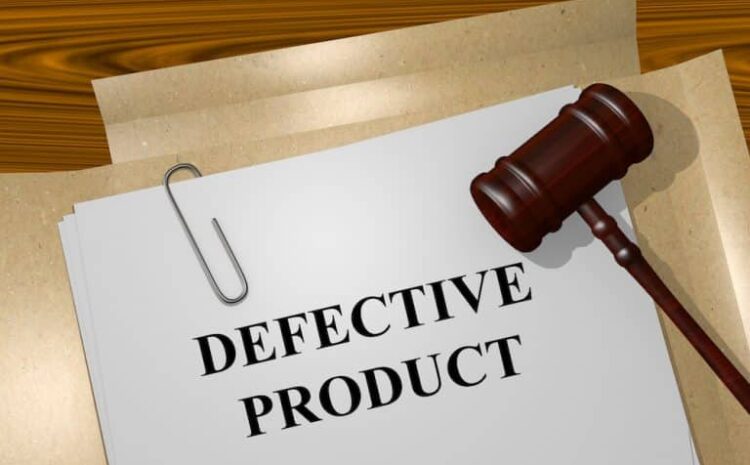
We expect a product to be functional and safe when we buy it. Occasionally, however, dangerous or defective products find their way into stores and our homes. This can lead to serious injuries or even death. In these cases, the victim may be able to sue the seller or manufacturer of the product to recover damages.
Any consumer product, including household appliances, electronic devices and toys for children and adults can be defective or dangerous. Design defects and manufacturing and marketing defects are some examples of common defects.
A design flaw is a flaw that exists in the design of a product, which makes it dangerous or defective. A design defect would be, for example, if the coffee maker was designed so that it could overheat and cause a fire.
Manufacturing defects, on the contrary, occur when an error is made in the manufacturing process, which renders the product unsafe or defective. A manufacturing defect would be, for example, if an incorrectly assembled batch of cribs caused them to collapse, injuring babies.
When a manufacturer fails to provide sufficient warnings or instructions regarding the dangers of using their product, this is a marketing defect. A marketing defect would occur, for example, if the manufacturer of a power tool fails to warn about the dangers associated with the use of the tool without protective equipment.
Victims of defective or dangerous products who suffer injuries may sue their manufacturer or seller for damages, regardless of the defect type. In order to do this, the victim will need to show that the product is defective or dangerous and that it caused the injury.
Strict liability is a legal theory that can be used as a basis for a lawsuit involving injuries caused by a dangerous or defective product. Strict Liability is a legal doctrine that holds defendants responsible for any harm caused by product defects, regardless of their negligence. A strict liability lawsuit could be filed in the context of a product defect lawsuit to hold the seller or manufacturer of the product responsible for the defect that led to the injuries.
In order to win a strict-liability lawsuit, the plaintiff will need to prove that the defendant manufactured or designed a defective product and that it was this defect that caused the plaintiffs’ injuries. It can be difficult to prove strict liability, since it requires expert testimony and extensive evidence.
Negligence is another legal theory which can be used as a basis for a lawsuit if injuries are sustained because of a dangerous or defective product. A legal theory called negligence holds defendants responsible for any harm they cause by failing to take reasonable care. A negligence lawsuit may be filed in the context of a defective products lawsuit if the defendant fails to test the product properly, does not provide adequate instructions or warnings, or fails to recall the product even though they are aware of its defect.
In order to win a negligence case, the plaintiff will need to prove four things: that the defendant owed the plaintiff a duty of reasonable care, breached this duty, caused the plaintiff’s injury, and suffered damages. This can be a difficult case and requires expert testimony and extensive evidence.
It is vital to consult an attorney if you or someone close to you has been injured by a dangerous or defective product. A lawyer can help you to understand your legal options and rights, collect the evidence necessary to support your claim, and navigate the complicated legal process of suing for damages.
Victims of injuries caused by dangerous or defective products can sue the seller or manufacturer of the product to recover damages. In addition to strict liability, negligence can be used as a legal theory in support of a lawsuit. To understand their legal options and rights, victims should consult an experienced lawyer.

